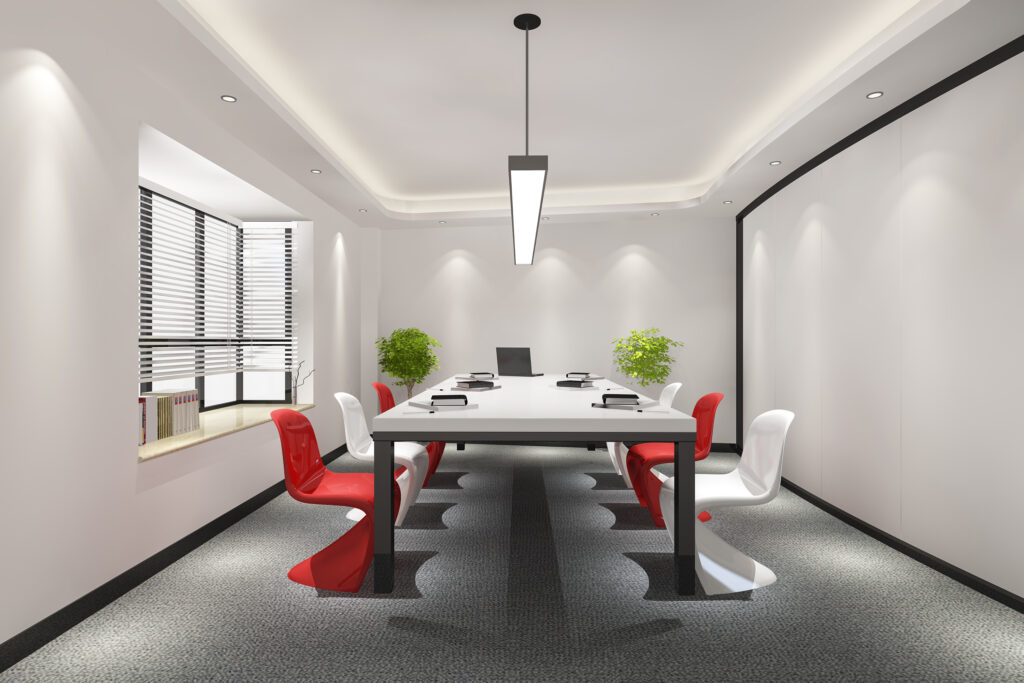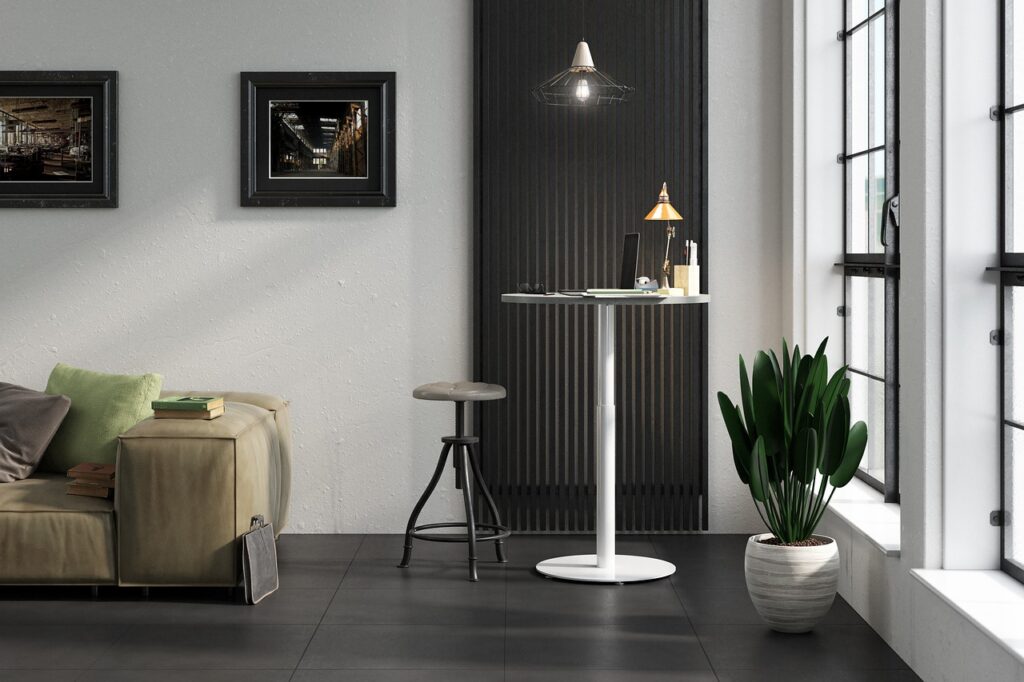In today’s competitive business landscape, the design of your commercial space holds immense significance. It’s not merely about aesthetics but about creating an environment that fosters productivity, reflects your brand identity, and leaves a lasting impression on clients and customers. This is where commercial interior designers step in, utilizing their expertise to transform ordinary spaces into extraordinary experiences. Let’s explore the multifaceted world of commercial interior design and the pivotal role it plays in shaping the success of businesses across various industries.
Strategic Design Solutions
Discussing the strategic approach of commercial interior designers in aligning design concepts with client objectives and brand identity.
Exploring the process of conducting client consultations, analyzing space requirements, and developing customized design solutions.
Highlighting the role of commercial interior designers as problem solvers, balancing functionality, aesthetics, and budget constraints to achieve client goals.

The Essence of Commercial Interior Design
Commercial interior design is the art of creating functional, aesthetically pleasing spaces tailored to the specific needs of businesses. Unlike residential design, which focuses on personal preferences, commercial design prioritizes the objectives and brand identity of the organization. It encompasses a wide range of sectors, including offices, retail stores, restaurants, hotels, healthcare facilities, and more. The primary goal of commercial interior design is to optimize space utilization, enhance functionality, and create environments that resonate with users.
Tailored Solutions for Diverse Businesses
One of the distinguishing features of commercial interior design is its adaptability to different industries and business types. Whether it’s a corporate office, a boutique hotel, or a bustling café, each commercial space has its unique requirements and challenges. Commercial interior designers possess the expertise to understand these nuances and deliver tailored solutions that align with the client’s objectives and brand identity. By immersing themselves in the culture and values of the organization, designers can create spaces that enhance the overall experience for clients, customers, and employees.
Optimizing Functionality and Flow
Discussing the importance of efficient space planning and circulation flow in commercial interiors.
Exploring design strategies for maximizing functionality and usability, such as zoning, wayfinding, and ergonomic considerations.
Highlighting the role of commercial interior designers in creating intuitive and user-friendly environments that enhance productivity and customer satisfaction.
Building Brand Identity Through Design
Your business space is more than just four walls; it’s a reflection of your brand identity and values. Commercial interior designers play a crucial role in translating your brand ethos into physical space, creating environments that reinforce brand recognition and loyalty. From the color palette and signage to the layout and furnishings, every design element is carefully curated to align with the brand identity. By creating cohesive and memorable experiences, designers help businesses differentiate themselves in a competitive market and leave a lasting impression on customers.
Maximizing Space Efficiency
Space optimization is a key consideration in commercial interior design, particularly in urban environments where real estate is limited and expensive. Commercial interior designers employ innovative design strategies to make the most of available space, maximizing functionality without sacrificing aesthetics. Whether it’s through modular furniture solutions, flexible workspace configurations, or clever storage solutions, designers strive to create environments that are efficient, adaptable, and conducive to productivity.
Prioritizing Comfort and Well-being
The comfort and well-being of occupants are paramount in any commercial setting, as they directly impact productivity, satisfaction, and overall experience. Commercial interior designers focus on creating environments that promote physical and mental well-being through thoughtful design choices. This includes considerations such as ergonomic furniture, natural lighting, adequate ventilation, and noise control measures. By prioritizing comfort and wellness, designers contribute to a positive and conducive work environment that enhances employee satisfaction and retention.

Technology Integration
Exploring the role of technology in shaping the design of commercial interiors, from interactive displays and digital signage to smart lighting and automation systems.
Discussing how commercial interior designers leverage technology to enhance user experiences, streamline operations, and collect data for performance optimization.
Showcasing examples of innovative technology integration in retail environments, corporate offices, and hospitality venues.
Embracing Sustainability in Design
In an era of increasing environmental awareness, sustainability has become a central focus in commercial interior design. Designers are incorporating sustainable practices and materials into their projects to minimize environmental impact and promote resource conservation. This includes using eco-friendly materials, energy-efficient lighting, and HVAC systems, as well as incorporating biophilic design principles to connect occupants with nature. By embracing sustainability, designers not only reduce the carbon footprint of commercial spaces but also create healthier and more environmentally responsible environments for occupants.
Navigating Regulatory Compliance
Navigating the complex landscape of building codes, regulations, and permits is a challenging task for business owners. Commercial interior designers are well-versed in local building codes and regulations and ensure that projects comply with all relevant requirements. From accessibility standards to fire safety regulations, designers guide clients through the regulatory process, mitigating risks and ensuring a smooth project delivery. By staying abreast of the latest codes and standards, designers help clients navigate the regulatory landscape and avoid costly delays or fines.
Collaborative Partnership Approach
Successful commercial interior design projects are built on collaboration and partnership between designers, clients, architects, contractors, and other stakeholders. Designers foster open communication and collaboration throughout the design process, ensuring that all parties are aligned and engaged from concept to completion. By working closely with clients and stakeholders, designers ensure that the final design reflects the collective vision and goals of the project team. This collaborative approach not only enhances creativity and innovation but also fosters a sense of ownership and pride among all stakeholders.

Cultural Sensitivity and Inclusivity
Discussing the importance of cultural sensitivity and inclusivity in commercial interior designers in Gurgaon, particularly in diverse and multicultural environments.
Exploring design strategies that celebrate cultural diversity, promote inclusivity, and create spaces that are welcoming and accessible to all users.
Highlighting the role of commercial interior designers in fostering a sense of belonging and community through thoughtful design interventions.
Commercial interior designers play a vital role in shaping the success of businesses across various industries. Through their expertise, creativity, and commitment to excellence, designers transform ordinary spaces into extraordinary environments that inspire, engage, and delight. Whether you’re revamping an existing space or starting from scratch, investing in the services of a commercial interior designer can elevate your business environment and set you apart from the competition.





